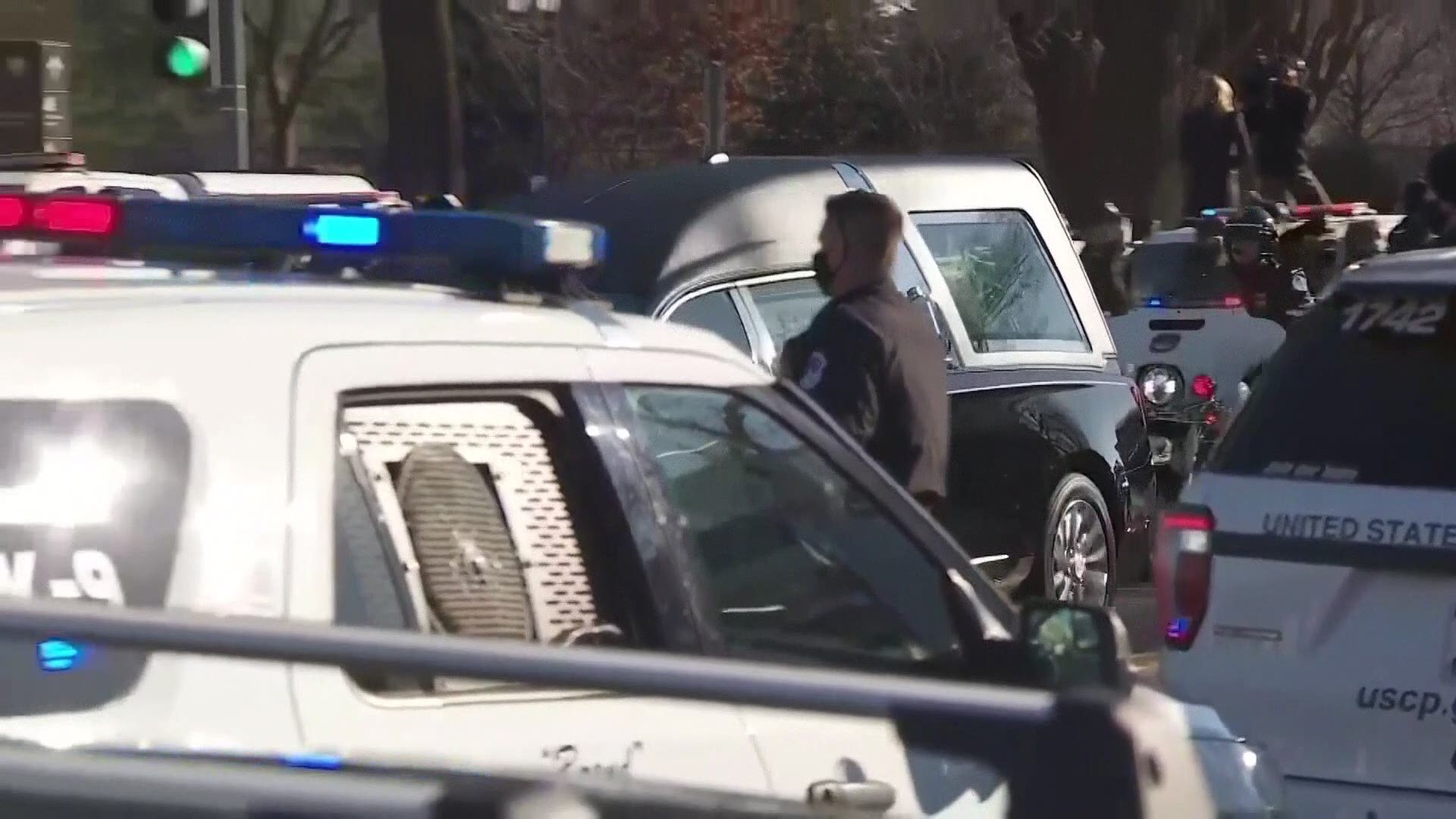WASHINGTON — It’s been a month since Capitol Police Officer Brian Sicknick died from injuries sustained while defending the U.S. Capitol Building and unanswered questions still linger about his death. Chief among them: Who, if anyone, is responsible?
Sicknick, 42, a 12-year veteran of the force, died on January 7 after being injured the day before while “physically engaging with protestors” during the insurrection at the Capitol, according to Capitol Police. Three sources close to the department told WUSA9 Sicknick was struck in the head with a fire extinguisher.
In the aftermath of the events of January 6, former Capitol Police Chief Steven A. Sund resigned and the Capitol Police union has laid Sicknick’s death – plus those of two other officers who have since taken their lives after responding to the Capitol that day – at the feet of “unconscionable” failures by department leadership.
A retired Pennsylvania firefighter, Robert Sanford, has been arrested on charges of assaulting multiple officers with a fire extinguisher during the Capitol riot – although police have, to date, not linked him with the assault on Sicknick.
The day after Sicknick’s death, North America’s Building Trades Unions (NABTU) announced a $100,000 reward for the arrests of suspects involved. NABTU director of communications and marketing Betsy Barrett told WUSA9 that the organization couldn’t release the number of tips it has received, but did say some “have been very credible.” The reward is good until March 1, and anyone with information can submit a confidential tip to reward@nabtu.org.
Nevertheless, nearly a month later, no suspect has been identified publicly, DC Police and the FBI both declined to say more than that the case “remains under investigation” and the Office of the Chief Medical Examiner in D.C. told WUSA9 an official cause of death remains pending.
“The Office of the Chief Medical Examiner will release the cause and manner of death when this information is available,” the agency told WUSA9 on Monday.
Glenn Ivey, the former state’s attorney for Prince George’s County and a former federal prosecutor with the District of Columbia U.S. Attorney’s Office, said the seeming delay in reporting information about Sicknick’s death could be a desire by investigative agencies to make sure everything is buttoned up – so that an eventual prosecution has the best chance of being successful. Or, he said, the delay could be a red flag that the available evidence is too inconclusive.
“It could be a challenge to sort out and specify who exactly did what in the middle of that riot that was going on,” Ivey said. “And they’ve got to link it directly to causing the death of Officer Sicknick, either by someone who, say, hit him with a fire extinguisher, or someone who was part of the effort to do that… maybe somebody held him while he was hit or something along those lines. And I think that’s part of the delay in moving forward with that.”
The FBI has also said it still has hundreds of hours of footage captured during the riot to go through, which Ivey said could be slowing things down.
“What the prosecutors might be doing is putting a lot of people in front of the grand jury, gathering a lot of information, and videos in particular, about who was there who might have been in the vicinity, who might have information about it,” Ivey said. “And they’re also spending a lot of time going through electronic information. They’re probably getting cell phone information as well. So it’s going to take a while for them to nail all of that down. And I’m sure they’re going to want to be thorough and careful.”
And, Ivey said, there’s still that last piece of the puzzle – the medical examiner’s decision – that is a key factor for the case moving forward.
“The medical examiner has to decide what the cause of death was,” he said. “If you know he was struck or injured in some way by somebody involved in the riot, you know, I think it makes it easier for the prosecutors to say, ‘That’s the cause of death,’ and move forward with a homicide or murder prosecution there.”
Another possible red flag: Ivey said any underlying medical conditions Sicknick may have had could also be complicating things.
"It may be that the medical examiner is having some difficulty sorting out whether the medical conditions were part of the cause of death or the sole cause of death or, you know, whether he was struck," Ivey said.
Sicknick's body will lie in honor in the Capitol Rotunda beginning Tuesday evening after receiving approval from both chambers of Congress. He becomes only the fifth American to ever lie in honor in the Capitol – an honor reserved for private citizens. The limited few others to lie in honor include Capitol Police Officer Jacob J. Chestnut Jr. and Detective John M. Gibson, who both died in the line of duty when a gunman stormed past a U.S. Capitol security checkpoint on July 24, 1998, headed for then-Majority Whip Tom DeLay's office.
We're tracking all of the arrests, charges and investigations into the January 6 assault on the Capitol. Sign up for our Capitol Breach Newsletter here so that you never miss an update.

